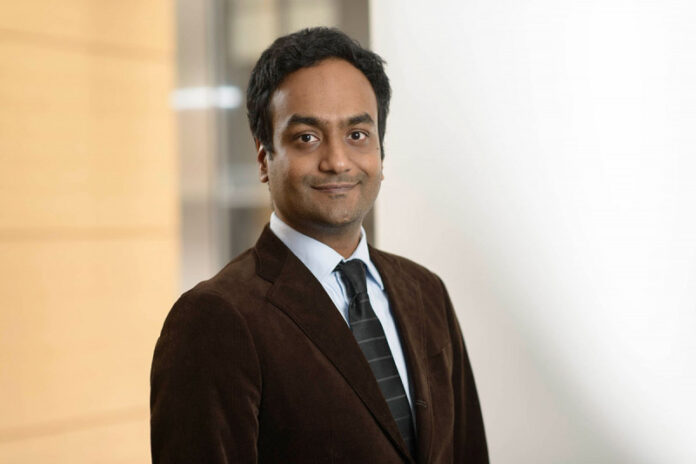Such reconstructive surgery is essential to restore urinary function in patients with neurogenic bladder dysfunction, congenital disorders or following the surgical treatment of bladder or pelvic cancers. As Srimathveeravalli explains, “Knowledge gained from our proposed research will yield a simple intrasurgical technique that combines technologies and grafting techniques that are already in the clinic, enabling rapid translation for the immediate benefit of patients undergoing bladder reconstruction.”
According to Srimathveeravalli, the current standard of care for bladder reconstruction is to use the “ileal segment,” a patient’s own intestinal tissue, as graft material to create a “neobladder” or urinary diversion. One critical problem with this standard-of-care approach to bladder reconstruction is that the post-surgical persistence of these intestinal cells in the graft impedes regeneration in the bladder wall, resulting in stone formation, metabolic acidosis and, most importantly, the risk of secondary cancers.
The alternative approach to tissue engineering of bladder constructs and functionalized grafts relies on lab-based, “bottom-up” assembly of key components such as the extracellular matrix, vasculature, and cells, with increasing resource requirements for developing more complex tissue.
However, Srimathveeravalli’s solution will be to use a “knockdown” approach to tissue engineering as opposed to the widely investigated “bottom-up” technique. “Our objective,” says Srimathveeravalli, “is to develop a new technology for intrasurgical tissue engineering using the ileal segment by knockdown of cellular components using ‘irreversible electroporation.’”
Irreversible electroporation, according to the Mount Sinai Hospital website, “is a new technology that destroys cancerous tumors with short electrical pulses without thermal heat. The main advantage of irreversible electroporation is that we can administer it safely to tumors that are near critical parts of your body without doing damage to healthy organs or tissue.”
As Srimathveeravalli explains about his new technique, “Here, we will advance the novel approach of performing knockdown tissue engineering by applying our new intrasurgical techniques to eliminate cellular or tissue components in an autologous [meaning ‘of cells or tissues obtained from the same individual’] graft. Our approach will yield an optimal substrate for regeneration by virtue of being fully vascularized and having a patient-compatible extracellular matrix, features that are resource- and time-consuming to accomplish with bottom-up tissue engineering.”
Srimathveeravalli expects this new technique to lead to many other exciting innovations in grafts going far beyond bladder reconstruction.
Srimathveeravalli explains that “Eventually, we anticipate our work to advance the concept of in vivo production of functionalized grafts using the patient as the source of biomaterial and the bioreactor, with application to reconstructive surgery involving other tubular organs such as the esophagus, trachea, or large blood vessels.”
The lack of suitable tissue grafts is a major impediment to improving outcomes of reconstructive surgery in children with tracheal defects or esophageal atresia, in which engineered solutions are unable to match the continuing growth of the patient. Similar challenges exist in performing reconstructive surgery of tubular organs in adult patients following cancer treatment (esophagus and bronchus), trauma, or cardiovascular disease.
The co-investigator for this project is Yubing Sun, an MIE assistant professor and BME adjunct, who studies fundamental engineering principles, such as manufacturing, biomechanics, materials science and micro/nanoengineering, to understand and harness the mechanobiology of cells for applications such as disease modeling and cell-based therapy.
As Sun explains his contribution to the NIH research, his lab will work together with Srimathveeravalli’s lab to investigate whether mechanical stimulation or the activation of certain mechanosensitive pathways can facilitate cell regeneration and eventually generate functional bladder tissue.
Srimathveeravalli heads the Govind Lab – Srimathveeravalli Research Group, which studies the interaction of non-ionizing energy and biology at multiscale resolution, from cells through organ systems. As he says, “Our techniques allow the targeted modulation of barrier function in the tissue microenvironment (cell membrane, stroma, and blood vessels), creating new platforms for the study of cancer and other diseases.”
(Source: UMass Amherst.)















